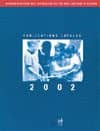Walk down the aisles of any toy store and you can’t miss them—toys that make noise. But are they merely annoying, or could they be harmful to a child’s hearing?
Every year, just before the busiest toy-shopping season, the Sight & Hearing Association (SHA) tests a variety of toys—taken right off local toy store shelves—for potentially dangerous noise levels. This year, 7 of 14 toys tested by SHA and researchers at the University of Minnesota sounded off over 100 dB at the receiver.
Say what? That’s louder than a chainsaw. The top offender on this year’s list, Kid Connection’s Electronic Guitar, blared at 117 dB—loud enough to risk hearing damage in about 10 minutes. The Elite Operations Quantum Blast Set blasted at 114 dB (Table 1 and Figure 1). And, similar to last year’s list, two books meant for 18-month-olds topped 100 dB. In fact, all of the toys tested measured over 90 dB directly at the speaker of the toy.

TABLE 1. The SHA study looked at common toys available in popular retail stores for a range of recommended age groups. The toys were measured for decibel levels at a distance of 0 inches (eg, right next to toy receiver) and 12 inches (eg, approximate operating distance at arm’s length for children).

FIGURE 1. Noise levels of toys in study (at 0 inches test distance) with relative noise-related landmarks.
Exposure to noise levels above 85 dB for 8 hours is the federal threshold for hearing protection. Levels above 90 dB can cause permanent hearing loss with relatively short exposure.
Chris Hilton and Emiro Caicedo, both resident otolaryngologists at the University of Minnesota, tested the toys. What they found surprised them. ”We were especially surprised that the toy guitar was so loud,” Hilton said. “With toys, you need to think like a kid. An adult wouldn’t put his ear up to a speaker, but a child would. This can dramatically increase the sound levels.”
“Also, the number of times a child plays with the toy will play a role in exposure time and this could pose a risk,” Caicedo added.
Because of a child’s shorter arm span, noisy toys are potentially more dangerous to hearing because children hold them closer to their ears. In the SHA study, the toys were repeatedly tested at distances simulating how a child might hold the toy, directly near the ear (0 inches) and at arm’s length (10 inches). A sound-proof acoustic chamber was used to ensure accurate measurements.
Until recently, there were no regulations in the United States regarding the loudness of toys. A new acoustics standard (ASTM F963), adopted and revised in March 2004 by the American Society of Testing and Materials, states that a hand-held, table-top, or crib toy cannot exceed 90 dB at 25 cm (eg, about 10 inches) from the surface of the toy. Compliance with the standard is voluntary.
As advocates for hearing conservation and safety, SHA is thrilled that the toy industry and consumer safety groups have finally realized that acoustics are an important part of overall toy safety. It should be pointed out that none of the toys we tested pose an immediate risk for hearing damage; however, some could pose a risk in a matter of minutes. SHA wants consumers to know what sound levels the toys are capable of producing so they can make their own decisions.
Despite the new acoustics standard, the toy industry continues to assert that toys are not harmful to hearing. In the Toy Industry Association’s statement regarding the sound level of toys, it writes “what makes people call a toy ‘too noisy’ is a matter of opinion and personal preference—just as some people prefer soft classical music to loud rock music.”
I disagree. A toy that features sound levels of 100 dB is still cranking out 100 dB, whether it’s Mozart, Metallica — or Mattel. Unlike toys with choking hazards and other injuries, there are no injury statistics on toys and hearing loss. That’s because noise-induced hearing loss is extremely difficult to track relative to its origination. Noise-induced hearing loss is cumulative. It doesn’t typically happen from one event; it gradually happens over time. That’s why it’s important to start protecting hearing at a young age.
What to Do About Noisy Toys
To protect your children, the Sight & Hearing Association offers the following tips:
• Listen to a toy before you buy it. If it sounds loud to you, it’s too loud for your child.
• Report a loud toy. Call the Consumer Product Safety Commission at (800) 638-2772 or the Sight & Hearing Association at (800) 992-0424.
• Put masking or packing tape over the speaker on the toy. This will help reduce the volume.
What Message Are We Giving Kids?
Apart from the actual safety aspect that some extremely noisy toys may pose to children, one might also consider the message that noisy toys convey to kids: namely, that hearing health is unimportant. Just as we counsel children not to look into the sun or at extremely bright objects (eg, welding torches, halogen lamps, etc), we should also warn our children about the dangers of repeated exposure to intense noise. Playthings are supposed to be fun and safe for our children, and any parent/guardian has observed that a child will concoct a wide range of activities involving toys that do not exactly fit into the “intended use category” (eg, resting one’s ear on the receiver of a toy). Our world of rock-and-roll concerts, power tools, personal music players, and recreational vehicles should come equipped with ear protection; likewise, toys that are too loud for adults to accept should not be acceptable playthings of children.
Much of the hearing health care field’s current educational activities focus on the working population, those people who are old enough to be drawing a paycheck—and trying not to go deaf as a result of their noisy jobs and leisure pursuits. As important as this education is, one cannot help but wonder if we shouldn’t be focusing more attention on teaching youth that cumulative noise exposure over a person’s life is deleterious to hearing. After all, they have the most to lose. If we don’t educate our children about proper hearing health care and hearing conservation,1,2 our message may eventually be falling on the deaf(ened) ears of adults who should have received that education long ago as children.
Hearing conservation is something that should be taught at a young age, and noisy toys that are antithetical to a “healthy hearing” concept. Some people may think of this idea as being a “kill-joy” or “Grinch,” but when today’s children reach their later years in life, they will thank us!

|
Acknowledgement
This article was adapted with permission from the Sight & Hearing Assocation’s newsletter, Sight & Sounds.3
Correspondence can be addressed to HR or Julee Sylvester, Sight and Hearing Association, 674 Transfer Road, St. Paul, MN 55114-1402; email: [email protected]; Web site: www.sightandhearing.org.
References
1. Sight and Hearing Association (SHA). Know Noise [educational package]. St. Paul, Minn: SHA; 1999.
2. White S. Providing an educational hearing conservation program for kids. The Hearing Review. 2003;10(10):24-26,63.
3. Sylvester J. Noisy toys: Annoying or harmful? Sight & Sounds. 2005;11(2):1-3.



